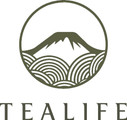Kagoshima-cha overtaking Shizuoka-cha as the No.1 producer of Japanese tea highlights an even bigger disturbing trend.
Posted by Yuki on 30th May 2021
On 12th of March 2021, the Japanese Ministry of Agriculture, Forestry, and Fisheries had made a certain data public which sent shockwaves across the entire tea industry of Japan. The total production value of Shizuoka-cha, which is the name of the tea produced in the Shizuoka prefecture of Japan, had dropped massively by 18.5% in 2019, relinquishing their No.1 position for the first time since 1967 when this data was first recorded.
The Kagoshima-cha, which is the tea produced in Kagoshima prefecture, also had dropped 13.1% compared to the previous year, resulting in 25.2 Billion JPY (roughly 229 million USD). While their drop was also significant, they sustained just enough to snatch the lead over Shizuoka cha.
This drop in production value of tea is a country wide trend. Overall, Japan's tea production has reduced 15.1%. The cold spring of 2019 hindered the overall growth of the buds, yielding less tea. Perhaps more importantly, the continuing decline of loose leaf tea demand is an ongoing problem pushing the prices of tea lower and lower. The crude tea prices has been consistently dropping, from the peak point of 2,400 JPY per kilogram in 1999 to 984 JPY per kilogram in 2019.
Top Japanese Tea producing prefectures 2019
1st Kagoshima (Kagoshima-cha) 25.2 Billion JPY
2nd Shizuoka (Shizuoka-cha) 25.1 Billion JPY
3rd Mie (Ise-cha) 6.6 Billion JPY
3rd Kyoto (Uji-cha) 6.6 Billion JPY
5th Fukuoka 3.5 Billion JPY
Actually, Kagoshima-cha overtaking Shizuoka-cha as the number one producer of Japanese tea was somewhat expected based on the recent trend. Kagoshima-cha has been maintaining if not steadily increasing tea production, while Shizuoka-cha has been under an ongoing decline. The Shizuoka-cha production value of 86.2 Billion JPY in 1992 has come all the way down to 25.1 Billion JPY for 2019.
However in the minds of Japanese, Shizuoka-cha is the king of Japanese tea in terms of production volume and value. It always has been, and it's so difficult to perceive a day would come that this would change. That's why this news has come as such a shock to many.
Now, why is the Kagoshima-cha doing so much better than Shizuoka-cha? The biggest reason lies in the geography of these two prefectures.
If you've been to Japan and taken the bullet train (or the Shinkansen) from Tokyo to Osaka, you would have passed through the Shizuoka prefecture. The biggest highlight is the Mount Fuji, but as you approach you'll also find several tea farms beautifully built on hills and slopes for an equally breathtaking view.
Much of Shizuoka's tea farms are like this. Small farms residing on the scenic slopes of Shizuoka.
These mountains provide a great environment for making quality tea, and is one of the reasons Shizuoka-cha is regarded as one of the highest of quality. However, this is also the exact reason why Shizuoka suffers from decline of production.
The biggest problem is that these slopes and mountains of fragmented farmland do not allow for heavy machinery to be implemented. Only small machinery can be used. Using machinery and technology is such an important component of surviving these days. However, there is no way to boost efficiency with the current technology on these hills and slopes.
When this problem is coupled with the continuous decrease in tea demand, it makes it nearly impossible for the small tea farms to foresee a positive long-term outlook. As the farmers age and retire, they'll close shop one by one instead of successfully finding a heir. Tis has been the trend not only in Shizuoka, but all of Japan. Hence, contributing to the decline of overall tea production.
The Kagoshima prefecture has taken a vastly different and innovative approach to this ongoing issue. They've leveraged on their vast flat lands and huge machinery to produce tea efficiently and in high quantity. They've built systems to establish quality and safety, and has resulted in a continuous increase in their production value. Overtaking Shizuoka as No.1 is a result of this.
While Kagoshima's approach is great, it's also a step towards standardization, normalization and less uniqueness in the tea. This obviously suits the needs of the booming bottled drink industry, but for us tea lovers, we're always in pursuit for the interesting, the outliers, the surprising, the different, and the amazingly greats.
Tealife is determined to continue to support and shed light on these small unique tea farms.
